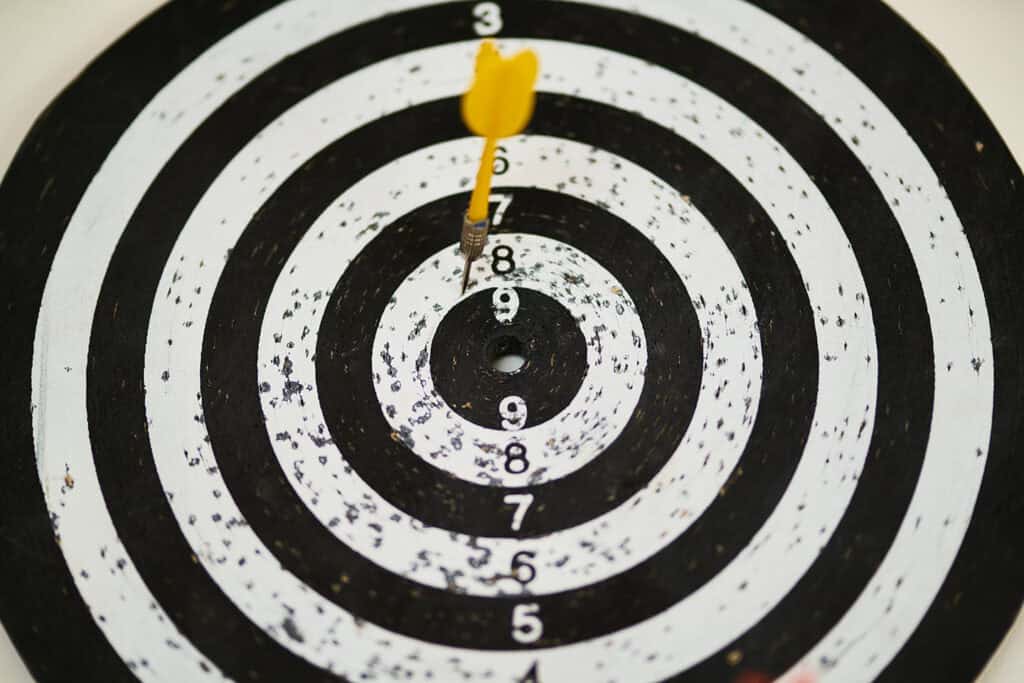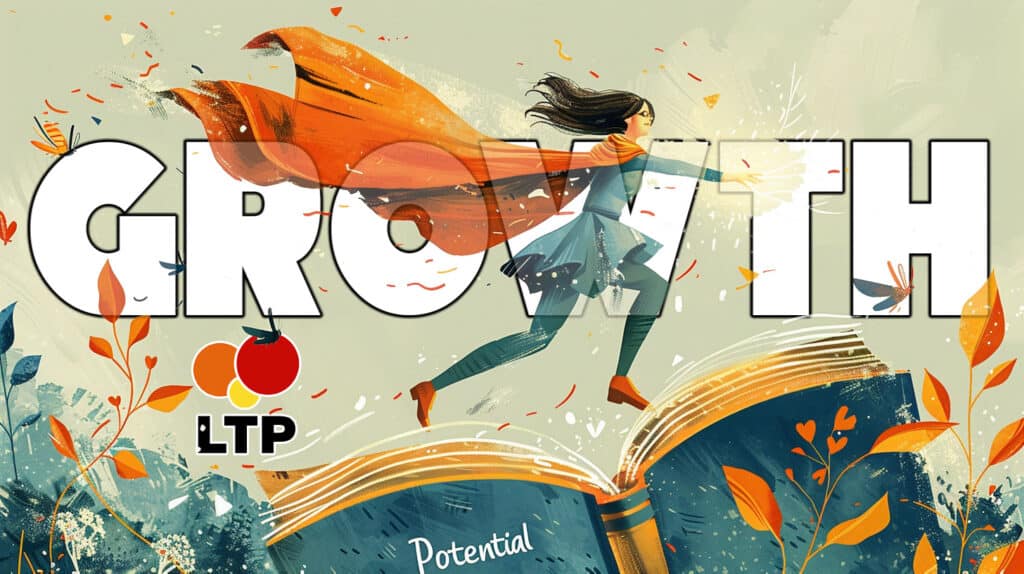


Are you ready to unlock your full potential and achieve lasting personal and professional growth? Many of us face daily challenges that hinder progress and fulfillment.
But fear not—you are not alone on this journey. As your trusted guide, I understand these obstacles firsthand and am here to help.
In this article, I’ll share a curated list of transformative tools, from goal setting to self-awareness practices, that will propel you forward. By following this plan, you’ll cultivate resilience, enhance productivity, and pave the way for a more fulfilling life.
After reading this article, you will have gained practical insights into overcoming obstacles and achieving personal growth.
You’ll understand effective strategies for setting and achieving meaningful goals, discover tools to enhance self-awareness and emotional intelligence, and learn how to cultivate healthy habits for sustainable success.
Take the first step towards your brighter future today!
- Considering Personal Growth Tools
- 1. Goal Setting
- 2. Self-Awareness Practices
- 3. Journaling
- 4. Mentorship
- 5. Healthy Habits
- 6. Time Management
- 7. Gratitude Practice
- 8. Forgiveness Practice
- 9. Self-Compassion
- 10. Relationship Building
- 11. Physical Well-being
- 12. Progress Celebration
- 13. Boundary Setting
- 14. Creativity Exploration
- 15. Continuous Learning
- Benefits of Personal Growth Tools
- Tools for Personal Growth: A Recap
Here are 15 personal growth tools:
- Goal Setting: Helps you focus and achieve meaningful objectives.
- Self-Awareness Practices: Activities like meditation or journaling enhance understanding of thoughts and emotions.
- Journaling: Clarifies thoughts, tracks growth, and promotes self-reflection.
- Mentorship: Guidance from experienced individuals accelerates personal development.
- Healthy Habits: Exercise, nutrition, and sleep foster physical well-being and vitality.
- Time Management: Efficiently prioritizing tasks reduces stress and boosts productivity.
- Gratitude Practice: Daily reflection on positives enhances resilience and happiness.
- Forgiveness Practice: Letting go of resentment promotes emotional healing and inner peace.
- Self-Compassion: Being kind to yourself builds resilience and self-esteem.
- Relationship Building: Effective communication and empathy strengthen personal and professional connections.
- Physical Well-being: Exercise, nutrition, and rest support overall health and mental clarity.
- Progress Celebration: Acknowledging achievements boosts motivation and satisfaction.
- Boundary Setting: Establishing healthy limits fosters self-respect and reduces stress.
- Creativity Exploration: Engaging in creative activities stimulates innovation and self-expression.
- Continuous Learning: Lifelong education expands knowledge and opens new opportunities for growth.
See also 10 Minutes Sleep Meditation: 7 Guided Practices for Better Sleep
Considering Personal Growth Tools

Personal growth tools are invaluable resources for development and advancement in both personal and professional world.
By incorporating practical tips and techniques into daily routines, individuals can enhance self-awareness and self-reflection, gaining valuable insights into their strengths and areas for improvement.
Setting clear personal and professional goals becomes more attainable with the aid of these tools, enabling individuals to cultivate self-confidence and emotional intelligence.
By integrating these tools into their lives, individuals can start a journey of self-development and fulfillment, creating a more enriching and rewarding life experience.
Whether it’s for career and wealth or personal growth, these tools offer practical strategies for navigating life’s challenges and achieving success in various aspects of life.
Here are 15 tools for personal growth:
1. Goal Setting
Goal setting is a powerful tool for personal growth and achievement. By gaining clarity on aspirations and desires, individuals can pave the way for a more fulfilling life.
Methods such as online courses and habit-tracking apps offer in-depth knowledge and practical advice to assist in goal identification and attainment.
Setting specific, measurable, achievable, relevant, and time-bound (SMART) goals enables individuals to focus their efforts effectively.
By identifying areas for improvement and committing to new skills and habits, goal setting becomes a pathway to managing stress, enhancing overall well-being, and being on a journey of personal development.
Here are 10 tips for setting a goal:
- Be Specific: Clearly define what you want to achieve.
- Make it Measurable: Include criteria to track your progress and success.
- Set Achievable Goals: Ensure your goal is realistic and attainable.
- Be Relevant: Choose a goal that aligns with your broader objectives.
- Time-bound: Set a deadline to create a sense of urgency and motivation.
- Write it Down: Document your goal to reinforce your commitment.
- Break it Down: Divide the goal into smaller, manageable tasks.
- Stay Flexible: Be prepared to adjust your goal as needed.
- Seek Support: Share your goal with others to gain encouragement and accountability.
- Review and Reflect: Regularly assess your progress and make necessary adjustments.
2. Self-Awareness Practices
Self-awareness practices are integral to personal growth and a successful life. Methods like habit tracking, vision boards, and identifying core values help individuals understand various aspects of themselves.
By staying motivated and seeking actionable advice, individuals can reduce stress and regulate emotions effectively. Engaging in these practices as part of a daily routine supports a lifelong journey of growth and self-discovery.
Additionally, connecting with like-minded individuals in person or online helps a supportive environment for personal development.
Through self-awareness practices, individuals can identify patterns, gain insights, and navigate their growth journey with clarity and purpose.
3. Journaling
Journaling is a powerful tool for personal growth and personal development. It promotes self-awareness by encouraging reflection on thoughts, emotions, and experiences.
To start, create a supportive environment free from distractions. Choose a journaling method that resonates with you, whether it’s free writing, prompts, or bullet journaling.
Regular journaling helps track progress toward goals and manage time effectively. Additionally, reading inspiring stories or insights from industry leaders can spark creativity and new perspectives.
By journaling consistently, individuals can cultivate a growth mindset, gain access to personal and professional insights, and work toward desired outcomes while fostering continuous learning and development.
Here are 15 journaling methods:
- Free Writing: Write continuously without editing.
- Gratitude Journaling: Note things you’re grateful for.
- Bullet Journaling: Use lists and calendars for structure.
- Stream of Consciousness: Write unfiltered thoughts.
- Prompt-Based Journaling: Use specific prompts or questions.
- Reflective Journaling: Reflect on daily experiences.
- Dream Journaling: Record dreams upon waking.
- Art Journaling: Combine art with writing.
- Travel Journaling: Document travel experiences.
- Wellness Journaling: Track health and wellness.
- One-Line-a-Day: Summarize your day in one sentence.
- Vision Journaling: Write about goals and dreams.
- Dialogue Journaling: Write conversations with yourself or others.
- Morning Pages: Write three pages first thing in the morning.
- Mood Tracking: Track daily moods with charts or colors.
4. Mentorship
Mentorship plays a crucial role in one’s personal and professional development, offering valuable guidance, support, and insights.
Mentors, with their in-depth knowledge and experience, provide practical tips and advice tailored to individual goals and aspirations.
Through regular interactions, mentees gain self-awareness and engage in self-reflection, enhancing their overall well-being and professional life.
Examples of mentorship include career mentors, life coaches, and wellness mentors who utilize tools like habit-tracking apps to monitor progress and offer personalized strategies.
By having a nurturing mentor-mentee relationship, individuals can accelerate their personal growth and achieve their personal development goals effectively.
5. Healthy Habits
Healthy habits are essential for overall well-being and personal growth. Examples include consuming nutritious foods, staying hydrated with water and fruits rich in vitamins, and engaging in regular physical activity like walking.
Additionally, scheduling regular health checkups ensures preventive care.
Cultivating positive thinking and a growth mindset promotes mental well-being and clarity. Time management techniques aid in balancing priorities and acquiring new skills, such as learning a new language.
Habit tracking, facilitated by apps or personal development tools, helps identify areas for improvement and helps in-depth knowledge of one’s habits, leading to enhanced overall well-being and fulfillment.
6. Time Management
Time management is essential for personal and professional growth, as it helps achieve desired outcomes while reducing stress. Adopting a growth mindset is crucial, viewing time management as a lifelong journey for overall well-being.
To improve time management, individuals can identify patterns in their daily routines, prioritize tasks, and stay motivated by setting actionable goals.
Emotional regulation plays a key role, in ensuring focus and productivity. Examples include scheduling dedicated time blocks for tasks, using productivity tools, and acquiring new skills to streamline processes.
By identifying areas for improvement and implementing effective time management strategies, individuals can optimize their time and maximize their personal and professional growth journey.
Here are 9 key time management techniques:
- Pomodoro Technique: Work in short, timed intervals (usually 25 minutes), followed by a short break.
- Eisenhower Matrix: Categorize tasks into four quadrants based on urgency and importance.
- Time Blocking: Schedule specific blocks of time for different activities or tasks.
- GTD (Getting Things Done): Capture, clarify, organize, reflect, and engage with tasks systematically.
- ABC Method: Rank tasks as A (most important), B (important), and C (least important).
- Eat That Frog: Do the most challenging task first to build momentum.
- Batch Processing: Group similar tasks together and complete them in one session.
- Pareto Principle (80/20 Rule): Focus on the 20% of tasks that yield 80% of results.
- Time Auditing: Track how you spend your time to identify and eliminate inefficiencies.
7. Gratitude Practice
Gratitude practice involves cultivating appreciation for the people, experiences, and blessings in one’s life. Examples include keeping a gratitude journal, regularly expressing thanks to others, and reflecting on moments of gratitude throughout the day.
By developing strategies to notice and acknowledge the valuable resources and relationships around us, gratitude helps a positive mindset, resilience, and emotional well-being. It increases self-awareness and self-confidence, leading to a more fulfilling life.
Successful individuals often attribute their success to gratitude, as it provides valuable insights and helps identify areas for self-development. Incorporating gratitude into daily routines can lead to personal growth and a greater sense of happiness and fulfillment.
See also Responsibilities: Tips for Streamlining Chores and Administration
8. Forgiveness Practice
Forgiveness practice is a powerful tool for emotional healing and personal growth. It involves letting go of resentments and grievances toward oneself or others, helping mental health and resilience.
To engage in forgiveness, individuals can use self-reflection and visualization techniques to gain clarity and release negative emotions.
This practice can be incorporated into daily routines through journaling or meditation. By staying motivated and committed to forgiveness, individuals can experience profound changes in both personal and professional life, managing stress more effectively and cultivating healthier relationships.
Ultimately, forgiveness is a transformative process that promotes inner peace and emotional well-being.
9. Self-Compassion
Self-compassion involves extending kindness and understanding toward oneself in times of struggle or difficulty. It encompasses self-awareness, self-reflection, and a deep understanding of one’s emotions and needs.
Examples of self-compassion include treating oneself with the same kindness and empathy one would offer to a friend, acknowledging and validating one’s feelings without judgment, and practicing self-care activities that promote emotional well-being.
To cultivate self-compassion, individuals can engage in self-reflection, seek support from others, manage stress effectively, and set personalized goals for personal and professional growth.
By prioritizing self-compassion, individuals can navigate their personal development journey with greater resilience, emotional support, and a deeper understanding of themselves.
10. Relationship Building
Relationship building is a cornerstone of personal growth, encompassing connections with others that contribute to emotional well-being and personal development.
Developing strategies for nurturing love and helping meaningful connections can lead to increased self-awareness and fulfillment.
Examples include seeking guidance from successful individuals, exploring personal development books for insights, and engaging in activities to gain clarity on values and goals.
By identifying areas for growth and developing new habits and skills, individuals can cultivate valuable resources in their relationships, ultimately enhancing their emotional well-being and overall personal development journey.
11. Physical Well-being
Physical well-being is a crucial tool for personal development and overall fulfillment in life. Engaging in regular exercise, such as cardio, strength training, or yoga, contributes to physical fitness and mental health.
Additionally, maintaining a balanced diet rich in fruits, vegetables, and whole grains supports optimal health and energy levels.
Adequate rest and sleep are also essential for recovery and rejuvenation. Prioritizing physical well-being not only enhances physical health but also boosts self-confidence and emotional intelligence.
By incorporating these practices into daily life, individuals can enjoy a healthier and more fulfilling lifestyle, gaining valuable insights and self-development along the way.
Here’s a list of 10 important practices for physical well-being:
- Regular Exercise: Aim for 150 minutes of moderate-intensity aerobic activity weekly, plus muscle-strengthening exercises.
- Balanced Diet: Eat fruits, vegetables, lean proteins, whole grains, and healthy fats; limit sugars and processed foods.
- Adequate Hydration: Drink plenty of water daily.
- Sufficient Sleep: Aim for 7-9 hours of sleep each night.
- Stress Management: Practice deep breathing, meditation, or yoga.
- Regular Health Check-ups: Schedule preventive screenings and check-ups.
- Limit Alcohol, Avoid Tobacco: Drink alcohol in moderation; avoid smoking and tobacco.
- Good Posture: Maintain proper posture and ergonomic practices.
- Sun Protection: Use sunscreen and protective clothing.
- Personal Hygiene: Practice regular handwashing, dental care, and skincare.
12. Progress Celebration
Celebrating progress is essential in the journey of personal growth and development. It reinforces motivation and provides a sense of achievement.
One way to celebrate progress is by setting personal development goals and tracking them regularly. For example, if your goal is to learn a new language, celebrate each milestone reached, such as completing a lesson or mastering a new vocabulary.
Additionally, incorporating visual representations of progress, such as charts or graphs, can make achievements tangible and rewarding.
Celebrating progress can also involve seeking support from mentors or peers, who can offer personalized guidance and encouragement. By integrating progress celebration into your daily routine, you can stay motivated and continue to thrive in both your personal and professional life.
13. Boundary Setting
Boundary setting is a crucial tool for personal growth and well-being, allowing individuals to establish limits in various areas of their lives.
In personal relationships, boundaries may involve communicating needs and expectations, such as setting limits on time or personal space.
In work environments, boundaries could include defining work hours or workload capacity. Setting boundaries requires clear communication, assertiveness, and self-awareness to identify one’s needs and limits.
Examples of boundary-setting techniques include saying “no” when necessary, prioritizing self-care, and expressing feelings openly.
Utilizing personal development tools and seeking support from mentors or counselors can provide valuable guidance in this process, helping individuals maintain healthy boundaries and personal growth.
14. Creativity Exploration
Creativity exploration is a valuable resource for personal growth, offering avenues to increase self-awareness and innovation.
Engaging in creative activities such as painting, writing, or music not only provides an outlet for expression but also develops strategies to tackle challenges.
By identifying areas of interest and experimenting with new skills, individuals can advance both personally and professionally. Incorporating creativity into daily habits helps continuous learning and tracks progress toward personal development goals.
Whether in-person workshops or solitary endeavors, creativity exploration serves as a dynamic tool for self-improvement, enriching both personal and professional lives with its transformative potential.
15. Continuous Learning
Continuous learning is a cornerstone of personal development, offering a wealth of opportunities for growth and advancement. By actively seeking out new skills and knowledge, individuals can expand their horizons and stay relevant in an ever-changing world.
Examples of continuous learning include enrolling in courses, attending workshops, reading books, and seeking mentorship.
To engage in continuous learning effectively, it’s essential to identify areas for improvement, set personal development goals, and develop strategies for achieving them.
Incorporating daily habits such as reading, practicing new skills, and reflecting on learning experiences can facilitate ongoing growth.
Tracking progress and adapting strategies as needed ensure that continuous learning remains a valuable resource for personal and professional development.
Here’s a list of 10 options for continuous learning:
- Online Courses: Platforms like Coursera, edX, or Udemy offer a wide range of courses.
- Books and E-books: Read non-fiction books and educational materials.
- Podcasts: Listen to educational podcasts on various topics.
- Webinars and Workshops: Attend virtual or in-person seminars.
- Professional Development: Enroll in programs offered by associations or companies.
- Language Learning Apps: Use apps like Duolingo or Rosetta Stone.
- MOOCs: Enroll in online courses from universities worldwide.
- TED Talks: Watch talks on TED.com for inspiration and learning.
- Skill-based Platforms: Platforms like LinkedIn Learning or Skillshare offer specific skill development.
- Certification Programs: Obtain certifications relevant to your field or interests.
Benefits of Personal Growth Tools

Personal growth tools offer numerous benefits for individuals seeking self-improvement and development.
By using these tools, individuals can effectively track their progress and measure their growth over time.
Engaging with personal development books and other resources provides valuable insights and strategies for managing stress, enhancing resilience, and helping personal growth.
These tools serve as catalysts for self-improvement, empowering individuals to cultivate self-awareness, build confidence, and achieve their goals.
By incorporating personal growth tools into their daily lives, individuals can start a journey of self-discovery, continuous learning, and fulfillment.
Here are 8 benefits of personal growth tools:
- Motivation: Tools can boost motivation by tracking progress and providing encouragement.
- Skill Development: They facilitate learning new skills or improving existing ones.
- Productivity: Tools enhance efficiency and time management.
- Decision Making: Tools aid in making informed decisions based on self-reflection and analysis.
- Accountability: They provide accountability by tracking commitments and actions.
- Improved Relationships: Personal growth tools can enhance communication and empathy in relationships.
- Purpose Clarity: Tools aid in clarifying personal values and aligning actions with purpose.
- Health and Well-being: They contribute to holistic well-being, integrating physical, mental, and emotional health.
See also Family Bonding: Strengthening Family Connections and Relationships
Tools for Personal Growth: A Recap
In conclusion, personal growth tools are invaluable resources for individuals committed to their personal development journey. Whether setting personal development goals, seeking self-improvement, or managing stress, these tools provide the necessary framework and support for growth.
By engaging with self-development books, tracking progress, and actively incorporating these tools into daily life, individuals can cultivate self-awareness, resilience, and fulfillment.
Personal growth is a continuous process, and these tools serve as essential companions along the way, offering guidance, inspiration, and practical strategies for navigating life’s challenges and realizing one’s full potential.
Following personal growth tools empowers individuals to take charge of their personal lives, help meaningful change, and create a future aligned with their aspirations and values.


